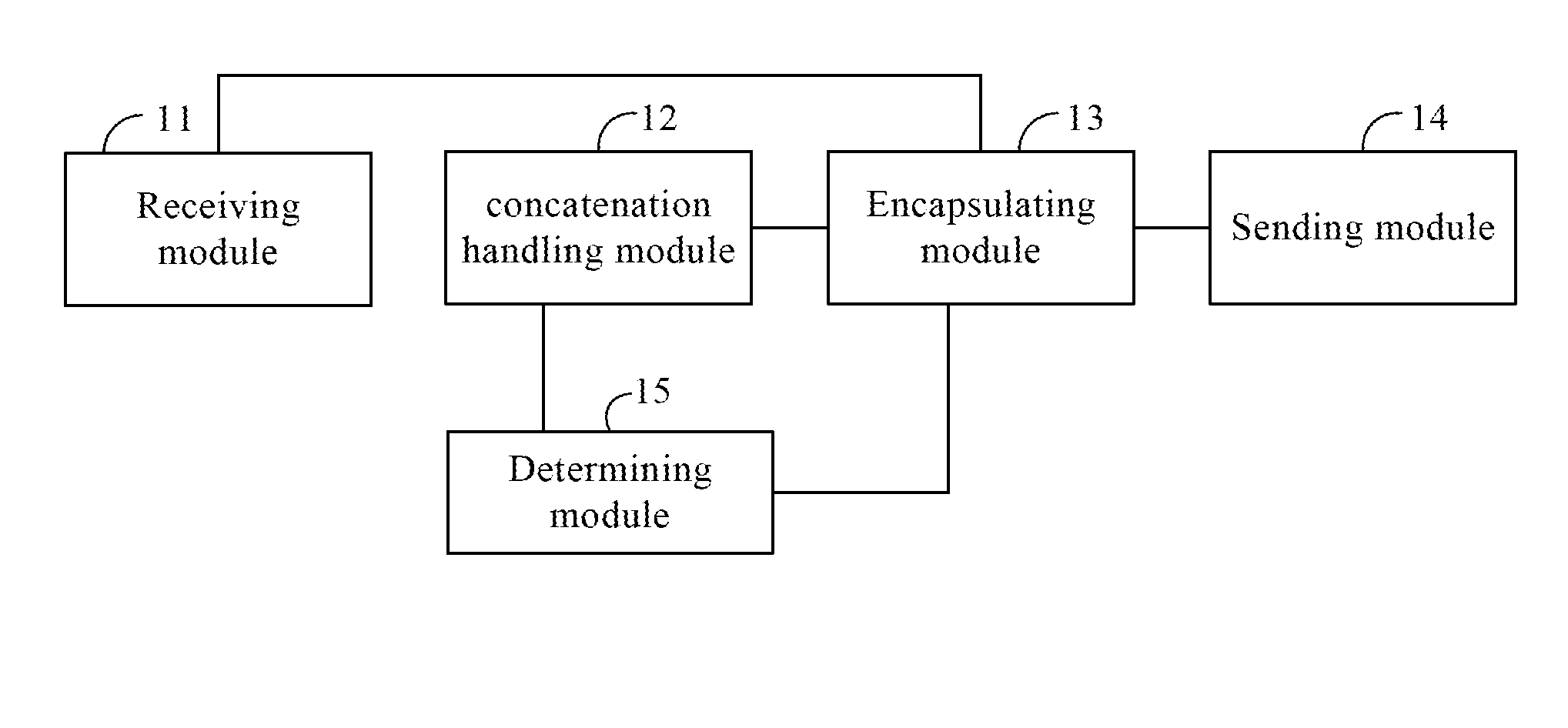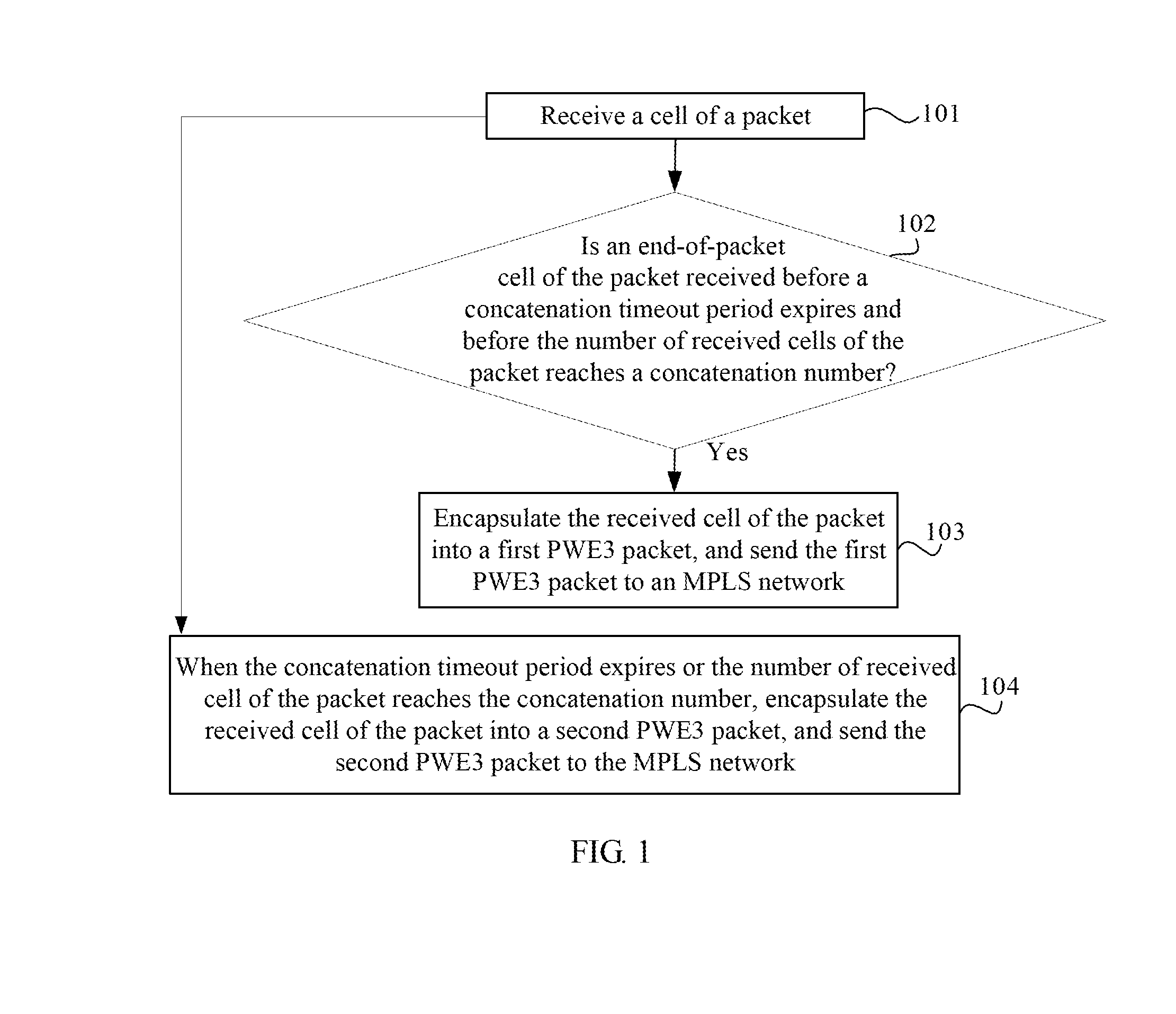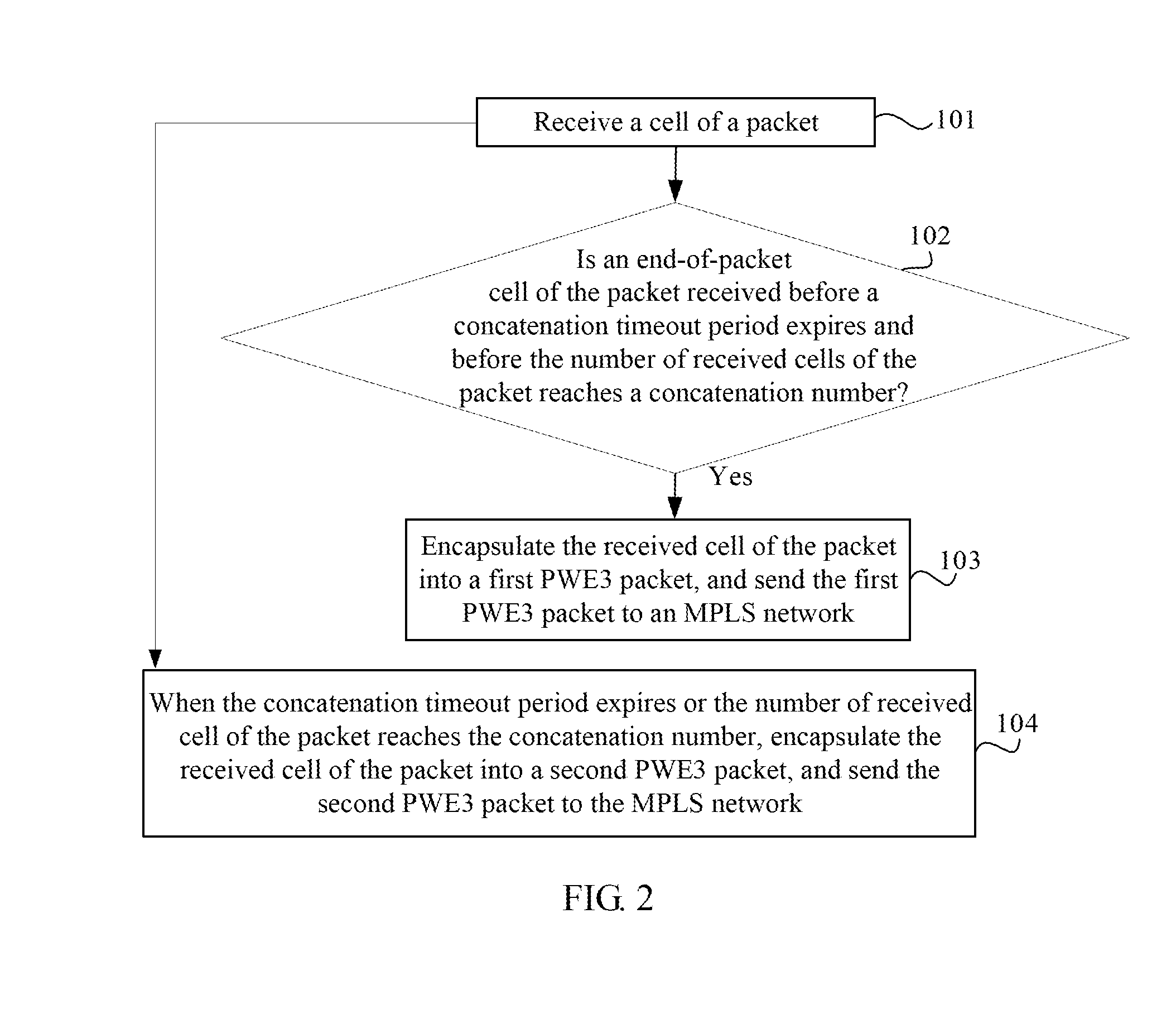Handling Method and Device for Cell Concatenation
a cell and concatenation technology, applied in the field of communication technologies, can solve the problems of low bandwidth utilization rate of atm, delay and jitter, and achieve the effect of reducing delay and jitter for packets
- Summary
- Abstract
- Description
- Claims
- Application Information
AI Technical Summary
Benefits of technology
Problems solved by technology
Method used
Image
Examples
Embodiment Construction
[0016]FIG. 1 is a flowchart of a handling method for cell concatenation according to an embodiment of the present application. As shown in FIG. 1, the method according to this embodiment includes the following steps described below.
[0017]101. Receive a cell of a packet.
[0018]102. Determine whether an end-of-packet cell of the packet is received before a concatenation timeout period expires and before the number of received cells of the packet reaches a concatenation number.
[0019]103. If the end-of-packet cell of the packet is received, encapsulate the received cell of the packet into a first PWE3 packet, and send the first PWE3 packet to an MPLS network.
[0020]In this embodiment, if the end-of-packet cell of the packet is received before the concatenation timeout period expires and before the number of received cells of the packet reaches the concatenation number, the received cell of the packet is encapsulated into the first PWE3 packet. This relieves a limit of the concatenation nu...
PUM
 Login to View More
Login to View More Abstract
Description
Claims
Application Information
 Login to View More
Login to View More - R&D
- Intellectual Property
- Life Sciences
- Materials
- Tech Scout
- Unparalleled Data Quality
- Higher Quality Content
- 60% Fewer Hallucinations
Browse by: Latest US Patents, China's latest patents, Technical Efficacy Thesaurus, Application Domain, Technology Topic, Popular Technical Reports.
© 2025 PatSnap. All rights reserved.Legal|Privacy policy|Modern Slavery Act Transparency Statement|Sitemap|About US| Contact US: help@patsnap.com



